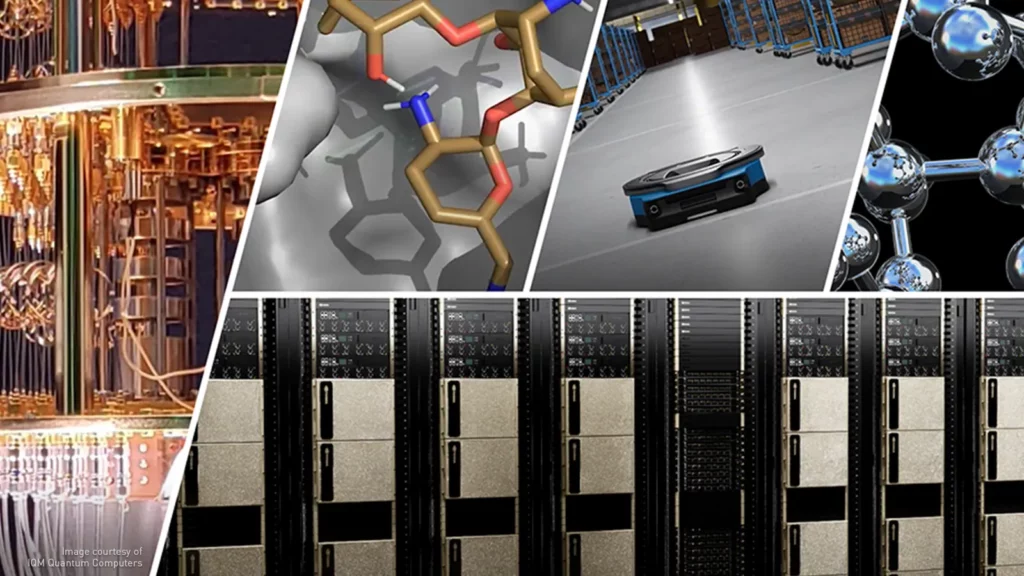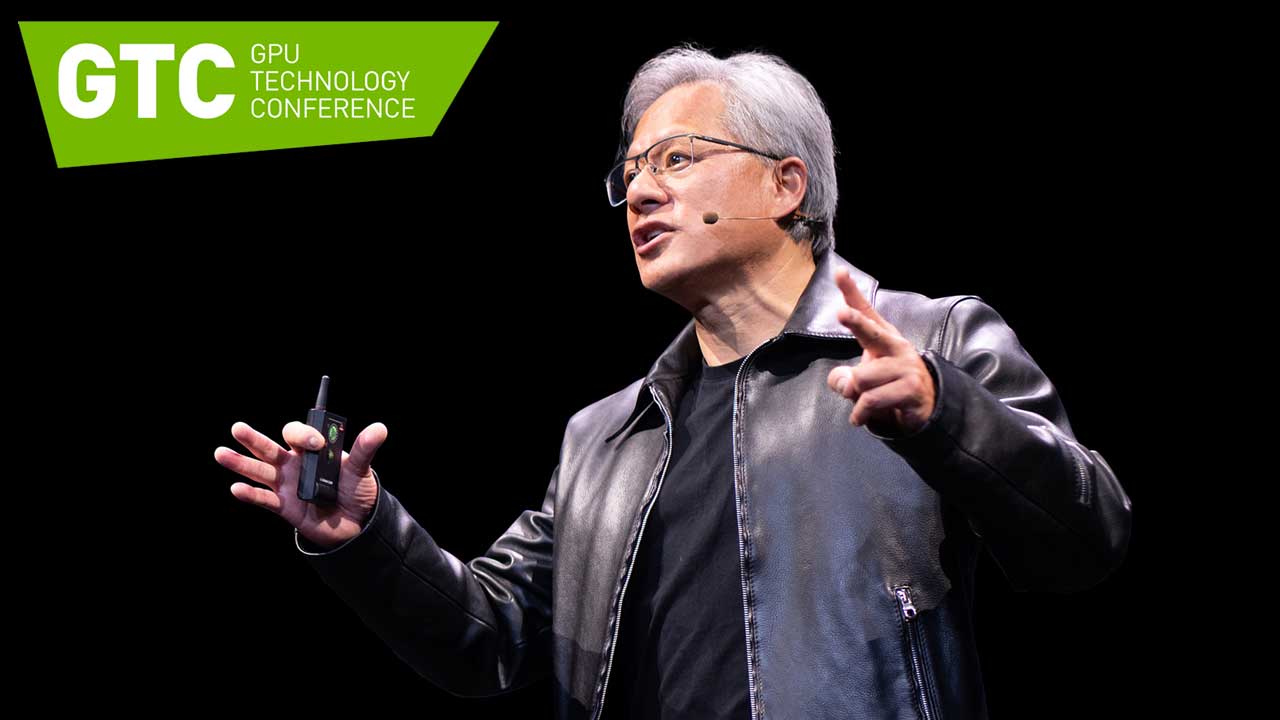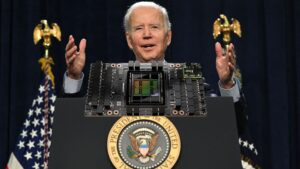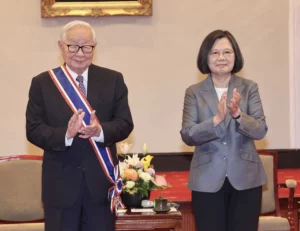Introduction

As of March 21, 2023, NVIDIA’s QODA is rebranded as CUDA-Q (Quantum). NVIDIA has unveiled a groundbreaking unified computing platform designed to accelerate advancements in quantum research and development spanning AI, HPC, healthcare, finance, and various other fields.
Dubbed the NVIDIA Quantum Optimized Device Architecture (QODA), this platform seeks to democratize quantum computing by establishing a cohesive hybrid quantum-classical programming paradigm. QODA serves as an inclusive, open environment for some of the most potent computational systems available today, enhancing scientific efficiency and facilitating expanded exploration in quantum research.
Experts in the realms of HPC and AI can seamlessly integrate quantum computing into their existing applications through QODA, harnessing the capabilities of current quantum processors alongside simulated future quantum machines utilizing NVIDIA DGX systems. Additionally, they can leverage the extensive array of NVIDIA GPUs found in scientific supercomputing centers and public clouds, fostering greater scalability and productivity in quantum research endeavors.
Follow us on Linkedin for everything around Semiconductors & AI
Combining Quantum and Machine Learning:
At GTC, a groundbreaking fusion of quantum computing and machine learning was unveiled.
Led by Alan Aspuru-Guzik, a team of researchers in Canada and the US spearheaded the effort. Their goal: to streamline quantum simulations using Large Language Models (LLMs).
The aim was to explore complex molecular structures more efficiently.This pioneering effort showcases the potential of quantum algorithms.
It also underscores NVIDIA’s commitment to pushing the boundaries of computational science. The team was the first to discover a lead candidate by using a quantum computer and classical computer.
“Scientific breakthroughs can occur in the near term with hybrid solutions combining classical computing and quantum computing,” said Tim Costa, director of HPC and Quantum Computing Products at NVIDIA. “QODA will revolutionize quantum computing by giving developers a powerful and productive programming model.”
The endeavor employed NVIDIA’s CUDA-Q, a hybrid programming model designed for GPUs, CPUs, and the QPUs utilized by quantum systems.
The research team conducted their experiments on Eos, which is NVIDIA’s H100 GPU supercomputer.
At GTC, Aspuru-Guzik revealed the algorithm that he developed, which employs machine learning and quantum computing to simulate chemical systems.
This algorithm is now available for research and is helping in healthcare and chemistry.
He added that if we continued using GPT-like models and these algorithms for quantum computing, we can have a GPT-like model for quantum computing.
Read More: $74 Billion on the Line: Tech War Heats Up as China Ban Intel AMD Processors from Govt. – techovedas
CUDA-Q: Bridging Classical and Quantum Computing:
Central to these advancements is NVIDIA’s CUDA-Q, a hybrid programming model tailored for GPUs, CPUs, and Quantum Processing Units (QPUs).

CUDA-Q is an open-source platform designed specifically for hybrid quantum-classical computing. https://developer.nvidia.com/cuda-q
Here’s what CUDA-Q brings to the table:
- Unified Programming: It provides a single programming model for working with CPUs, GPUs, and QPUs all together in one system. This simplifies the development process for researchers.
- Performance Boost: CUDA-Q leverages the power of GPUs to accelerate quantum algorithms, leading to significant speedups compared to traditional methods.
- Scalability: The platform allows researchers to scale their computations effectively by utilizing multiple GPUs or even clusters of GPUs.
- Openness: Being open-source, CUDA-Q fosters collaboration and wider adoption within the quantum computing community.
In essence, CUDA-Q acts as a bridge between the classical computing world (CPUs and GPUs) and the emerging realm of quantum computing (QPUs), enabling researchers to harness the strengths of both for tackling complex problems like simulating intricate molecules.
This innovative framework empowers researchers to seamlessly integrate classical and quantum computing methodologies, facilitating the development of novel algorithms and applications.
By leveraging the computational prowess of NVIDIA’s H100 GPU supercomputer, named Eos, scientists have achieved remarkable breakthroughs in simulating chemical systems, paving the way for transformative advancements in fields ranging from biopharma to materials science.
Read More: Why Cognitive Computing is Considered Future of Artificial Intelligence – techovedas
NVIDIA Quantum Cloud: Democratizing Quantum Computing:

In a move aimed at democratizing access to quantum computing resources, NVIDIA introduced the NVIDIA Quantum Cloud at GTC.
This groundbreaking platform provides researchers across various scientific disciplines with the tools and infrastructure necessary to develop and experiment with quantum algorithms and applications.
By lowering the barriers to entry and fostering collaboration, the NVIDIA Quantum Cloud promises to accelerate innovation and propel the quantum computing revolution forward.
Read More: Top 5 RISC-V Companies: Strengths and Moats – techovedas
Hybrid Computing and Real-World Applications:
The practical implications of NVIDIA’s quantum advancements are exemplified by real-world applications in sectors such as finance and cybersecurity.
HSBC, a global banking giant, implemented a quantum machine learning solution. The application was created with NVIDIA’s collaboration.
Its primary aim is to detect fraudulent activities in digital payment systems. HSBC utilized NVIDIA GPUs for this purpose.
The machine learning methodologies employed were state-of-the-art. The implementation showcased remarkable scalability.
HSBC simulated an impressive 165 qubits. This achievement underscores the transformative potential of hybrid quantum-classical computing.
Read More: What’s the Dynamic Relationship Between Elon Musk’s Ventures and NVIDIA – techovedas
Strategic Partnerships and Collaborations:
At the heart of NVIDIA’s quantum journey lies a commitment to research excellence and collaboration.
Through strategic partnerships with leading academic institutions and innovative startups, NVIDIA is cultivating the next generation of quantum scientists and engineers.
From Israeli startup Classiq’s integration with CUDA-Q for automatic quantum circuit synthesis to Rolls Royce’s simulation of the world’s largest circuit for computational fluid dynamics, these collaborations exemplify NVIDIA’s dedication to advancing the frontiers of quantum computing.
Charting the Future:
NVIDIA is at the forefront of the quantum revolution. GTC showcases groundbreaking developments in quantum computing.
NVIDIA drives innovation and pushes computational boundaries. Quantum computing holds immense potential for the future. Researchers and technologists are guided by NVIDIA’s pioneering spirit.
Read More:NVIDIA GB200: Unveiling the Truth Behind the Oberon Architecture – techovedas
Conclusion
In conclusion, NVIDIA is spearheading quantum computing’s future. It’s not just envisioning but actively shaping computing’s trajectory.
This paves the way for unparalleled computational power. Their leadership and dedication inspire progress.
We’re on the brink of a quantum revolution. NVIDIA’s efforts push us towards limitless possibilities.




